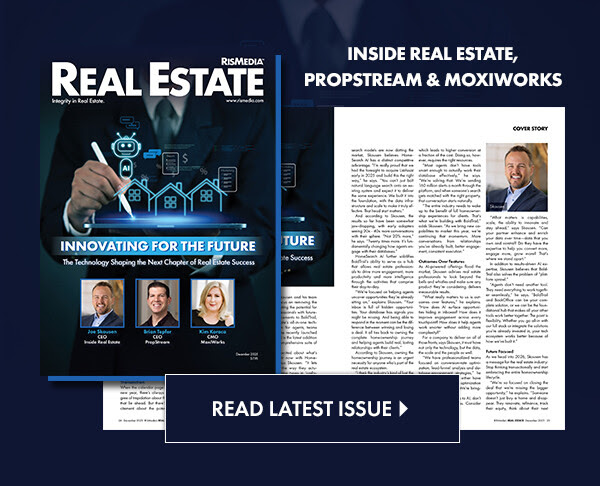 (MCT)—As mortgage rates sink deeper into record territory, homeowners are refinancing into 15-year loans at a pace not seen in a decade, aiming to pay off their debt in time for retirement.
(MCT)—As mortgage rates sink deeper into record territory, homeowners are refinancing into 15-year loans at a pace not seen in a decade, aiming to pay off their debt in time for retirement.
Freddie Mac’s latest mortgage rate survey showed the traditional 30-year fixed-rate loan averaged 3.75 percent last week, down from 3.78 percent last week. It was the fifth straight week of record lows.
Even more eye-catching in Thursday’s survey was the average for a 15-year fixed loan — 2.97 percent, down from 3.04 percent a week ago. It was the first sub-3 percent reading in the nearly 21 years that Freddie has tracked the 15-year loan.
With housing markets still troubled, the rates are mainly benefiting refinancers whose luck or self-discipline has left them with significant home equity. Purchase lending remains sluggish: The Mortgage Bankers Association says that fewer than a quarter of mortgages these days are used to buy homes.
But the latest surge in refinancings caused the trade group last week to boost its projection for mortgage volume this year by nearly $200 billion, to $1.28 trillion.
People refinancing mortgages often debate the merits of 15-year or 20-year loans that may hasten their payoff date but require bigger payments than a 30-year mortgage. At the rates quoted this week by Freddie Mac, the monthly principal and interest payment on a 30-year fixed loan of $315,000 would be $1,458.81, compared with $2,170.79 for a 15-year loan.
During the housing boom, few refinancers even considered shorter-term mortgages, which made up just 10 percent of all refis in 2006. To the regret of many, they instead extracted as much bubble-era equity as they could by taking on larger mortgages with long repayment times, and often with risky characteristics.
“People were getting 30-year interest-only loans, and they were pulling out all the cash they could,” says Richard T. Cirelli, president of RTC Mortgage Corp., a Laguna Beach, Calif., loan brokerage.
“Now it’s just the opposite—they want shorter-term loans, and they’re strategizing to get the mortgage payoff to coincide with their retirement,” Cirelli says. “We’re seeing 20-year loans, 15-year loans and even quite a few 10-year loans.”
Instead of cash-out loans, some borrowers are even putting cash in when they refinance, he said — for example, to get their balances down to $417,000 for a one-unit property, the maximum amount at which the lowest interest rates are available.
Also contributing to the trend: recent changes in the Obama administration’s Home Affordable Refinance Program, which cut the fees for certain borrowers getting new loans if they reduce the term of the mortgage to less than 30 years.
By Freddie Mac’s count, 31 percent of the refinancers in the first quarter of this year opted for shorter-term loans.
That is the largest percentage since 2002, when the typical rate for a 15-year home loan ratcheted down over the course of the year from about 6.5 percent to less than 5.5 percent. About 35 percent of refinancing homeowners chose shorter-term loans that year, saving themselves about half a percentage point in interest compared with a 30-year loan, Freddie Mac economist Frank Nothaft says.
The type of borrower in both cases was the same, according to Nothaft—people in their 40s and 50s whose incomes had risen enough that they could afford hundreds of dollars more each month to pay off more principal.
“It costs them more, but they’re looking to own their homes free and clear when they retire,” Nothaft says.
The Freddie Mac surveys assume that borrowers pay about 0.75 percent of the loan amount to the lender in upfront fees and discount points. Solid borrowers who shop around often find slightly better rates, and homeowners also can lower the rate by paying additional discount points.
The survey does not include third-party costs such as appraisals and title insurance.
Mortgage rates tend to rise and fall along with the yield, or effective interest rate, on U.S. government debt. The 10-year Treasury note serves as a benchmark for fixed-rate loans.
Five years ago, in June 2007, the average yield on the 10-year Treasury was above 5 percent, and late last June it exceeded 3 percent. The yield fell to 1.58 percent on Thursday, as investors troubled by the threat of defaults in European countries crowded into the perceived safety of U.S. government bonds.
“It would have been hard to find economists at the beginning of this year who thought we’d see this kind of decline in rates,” Nothaft says. “I certainly did not.”
©2012 the Los Angeles Times
Distributed by MCT Information Services










